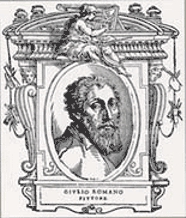[vc_row][vc_column width=”1/1″][text_output] The architect of Villa Lante, Giulio Pippi, known as Giulio Romano, was born in Rome ca 1499. He recieved his training from Raphaels shop at a very young age. He was involved in the construction of Palazzo Madama, designed by Raphael, and it is likely that during this time he let free his imagination, leading him to a very peculiar conception of architecture.
The architect of Villa Lante, Giulio Pippi, known as Giulio Romano, was born in Rome ca 1499. He recieved his training from Raphaels shop at a very young age. He was involved in the construction of Palazzo Madama, designed by Raphael, and it is likely that during this time he let free his imagination, leading him to a very peculiar conception of architecture.
Some of his first works were created in Rome: Palazzo Salviati at Via della Lungara, Palazzo Maccarani and the villa of Baldassare Turini. These early creations reveal his already characteristic style: the dialogue between classical and non classical forms and tectonic and atectonic elements and the freedom of the architectural language.
In 1524 Federico Gonzaga, the Duke of Mantua, called Giuliano Romano to Mantua where he then stayed until his death in 1546. The most important of his works in Mantua is the summer palace of the Gonzaga family, Palazzo del Te. It is considered the first significant representative of the manieristic style in the fields of architecture as well as painting and sculpture.
Giulio Romano dedicated his last years to designing churches and he was entrusted with both the transformation of the S. Benedetto di Polirone church and the renewal of the interior of the cathedral of Mantua. Romano’s distinctive style and sense of aesthetics caused him to remain an unconnected character in the history of architecture, although his works soon became famous: in particluar he was imitated for his Palazzo del Te model pf the architects of that time.[/text_output][/vc_column][/vc_row]

